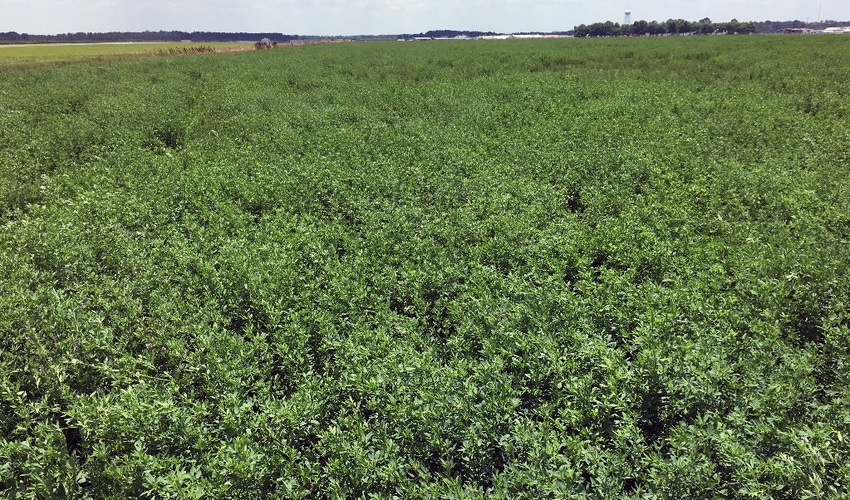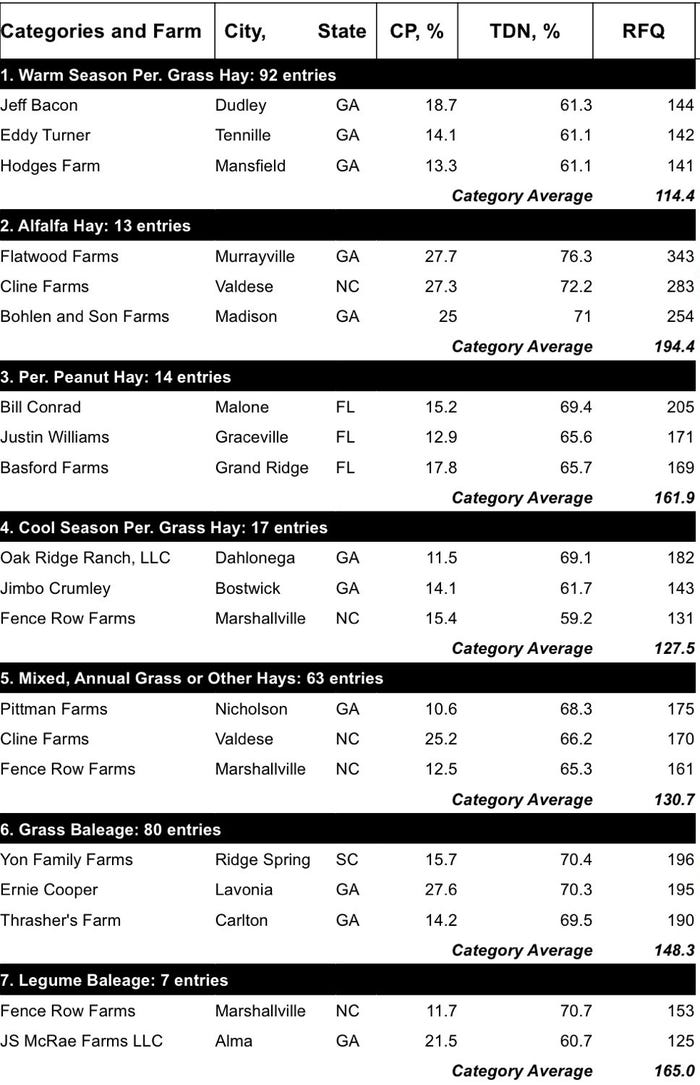
Flatwoods Farms produced extremely high-quality alfalfa and took the overall win for the 2018 Southeastern Hay Contest.
The farm based in Murrayville, Ga., scored a 300 on the Relative Forage Quality scale, and the farm’s contest sample might have scored higher, but 300 is as high as the RFQ index scores.
Dr. Dennis Hancock, University of Georgia Extension forage specialist and the contest's organizer, said a score of 300 has only happened twice in the contest’s 14-year history. The farm’s sample qualifies as ‘straight up rocket fuel’ forage.
Winners were announced during the opening ceremonies at the Sunbelt Ag Expo on Oct. 16.
The contest drew 286 entries from Texas to Virginia this year. Other than the overall winner, the annual contest categories include warm season perennial grass hay (bermudagrass, bahiagrass), alfalfa hay, perennial peanut hay, perennial cool season grass (tall fescue, orchardgrass, etc.) hay, mixed and annual grass hay, grass baleage and legume baleage.
Massey Ferguson is the contest’s headline sponsor. As overall winner, Flatwoods Farms will receive a new Massey Ferguson DM Series disc mower or RK Series rotary rake to use for its 2019 hay season, plus $1,000.
The first two-thirds of the 2018 growing season around much of the Southeast brought wet weather, and producers struggled to get hay dry, Hancock said, and 37 entries were disqualified because the hay moisture was higher than 18 percent. Drought stress late in September increased incidents of high nitrate levels in the forage in 2018. Eight percent of the samples were disqualified because nitrates were greater than 5,000 ppm.
“Though the average forage quality this year was very high, these weather challenges caused the average RFQ to be down slightly from previous years. Still, the winning entries were on par with or greater than record-winning values in the contest’s 14-year history,” Hancock said.
“Good management can make a remarkable improvement in forage quality in both favorable and unfavorable weather conditions,” he said.
The RFQ index was developed by the University of Florid and University of Wisconsin and it predicts the fiber digestibility and animal intake of harvested crops, Hancock said.
At the Sunbelt Expo farm in Moultrie, Ga., Hancock conducts forage research, and says alfalfa can grow well for a long time in the South. “Alfalfa demonstrations at the Expo began in fall 2005 and still look pretty strong, and that is very surprising.”
In south Georgia, where the Expo is located, Hancock typically tells producers that an alfalfa stand will last only four or five years. So why has the alfalfa at the Expo farm lasted so long? He says well-timed and -chosen fertility, most notable a combination of lime and gypsum, when the alfalfa was established at the Expo farm has led to its unusual vitality.
“Sufficient levels of P and K are crucial for root development, seedling vigor and establishment of alfalfa, too,” he said.

About the Author(s)
You May Also Like






